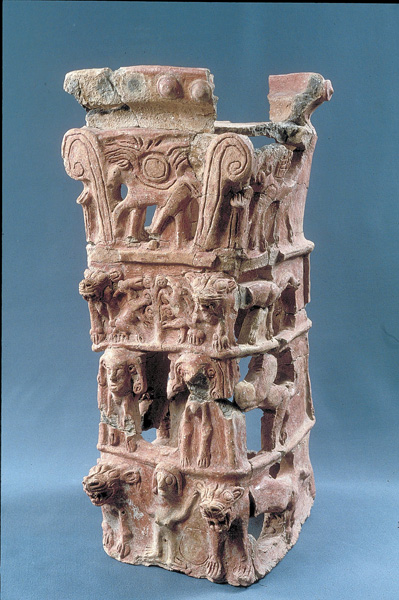Image Details

Zev Radovan
An elaborate cult stand from tenth- or ninth-century B.C.E. Taanach was likely used for libations or vegetable offerings. Its elaborate iconography has provoked much heated debate about where it fits in the religion(s) of ancient Israel.
From bottom to top, the stand shows a nude woman between two animals; winged sphinxes surrounding an empty space; lions, goats and a stylized tree; and a calf or horse between two columns surmounted by a winged sun-disk. Some scholars have interpreted the stand as reflecting the vibrant local religious traditions that flourished throughout Israel both before and after the rise of the monarchy in the tenth century. The woman on the bottom, for instance, has been identified as Asherah, Yahweh’s consort, and the calf (if it is a calf) the storm-god Baal. But others have argued that the symbolism all pertains to Israel’s official state religion and/or the Jerusalem Temple itself. (Even the empty space on the next-to-bottom tier has been identified as the “unrepresentable” god Yahweh.)
